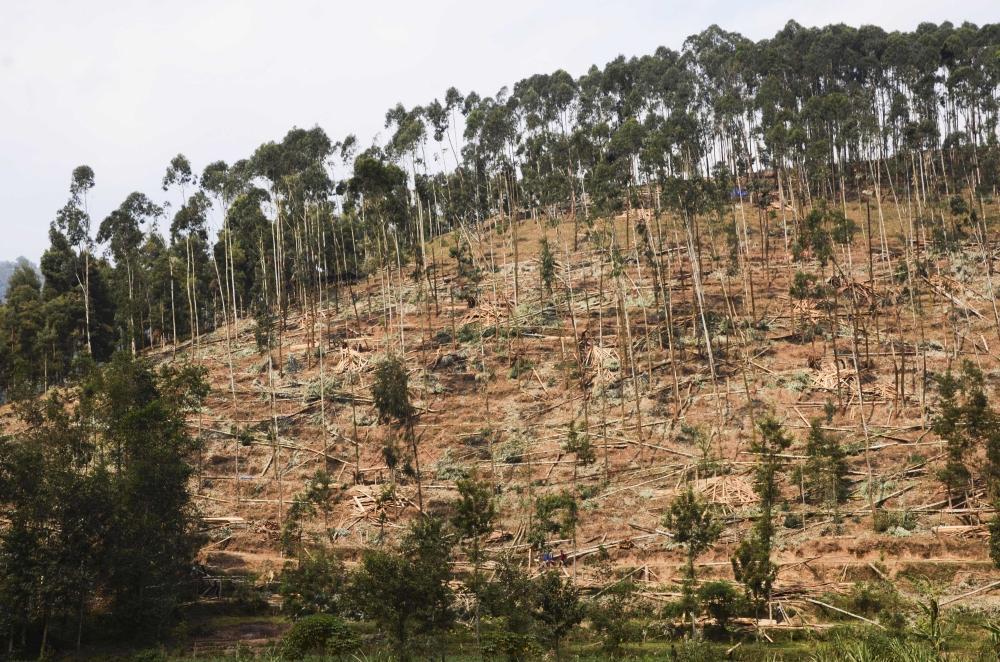Africa-Press – Rwanda. The optimal age for harvesting a tree depends on several factors, such as tree species, intended use, environmental conditions, economic considerations, and management goals since some trees can even live for up to 100 years, according to Rwanda Forestry Authority (RFA), which responded to MPs’ queries recently about ageing state forests.
In January, members of the Parliamentary Committee on State Budget and Patrimony visited all districts, including the City of Kigali, and found numerous state forests that are overaged.
“These forests should have been harvested and restored to maintain their value. Leaving them idle represents a loss of public resources,” said MP Gloriose Mukamwiza.
MP Epiphanie Mukampunga highlighted a case in Ngamba Sector in Kamonyi District, where a state forest had remained untouched for over four decades.
“A resident told us he had known the forest for more than 40 years. Most of the trees are now drying out. Local leaders said they did not have the authority to harvest the forest and were unclear about who is responsible for granting permission,” Mukampunga said.
Fidèle Kabayiza, Director of Non-Timber Forest Products at the RFA, explained that a tree planted for production purposes (timber, poles, firewood, stakes) is harvested when it reaches the stage at which the desired product can be obtained.
“There are three categories: fast-growing trees (eucalyptus, pines, etc.) that can be harvested not later than 30 years, slow-growing species (Entandrophragma excelsum or African mahogany, also known as Libuyu) that can even reach 100 years, and fruit trees that can be harvested at three years depending on the improvements made,” Kabayiza explained.
For trees planted for production purposes, the optimal harvesting age is determined to ensure that the expected products are not compromised due to over-maturity.
“Let’s take eucalyptus and pines as examples of the main timber plantation species in Rwanda. These are fast-growing trees, and when timber is the expected product, the maximum harvesting age is 30 years to achieve high-quality saw logs,” he said.
Harvesting forests requires a permit issued by the forestry authority. The harvesting process follows a competitive bidding procedure.
As part of first National Strategy for Transformation (NST1), which concluded in June 2024, the government aimed to allocate the majority of public forests—up to 85 per cent—to private operators through concession or co-management models.
Certain trees are harvested outside the regular production cycle due to their condition. These include hazardous trees, those with structural defects, invasive species, or trees damaged by natural disasters.
Private operators participate in joint inventories, pay stumpage fees, and comply with permits issued and monitored by the RFA.
According to the 2019 forest cover map, Rwanda’s forests (both natural and planted) cover about 724,695 hectares, equivalent to 30.4 per cent of the country’s land area.
Forests to harvest and not to harvest
State forests are further categorised into protected forests, production forests, protective forests, and those set aside for research and seed stands.
Among these, only production forests may be harvested, and only in accordance with an approved forest management plan. The rest are preserved unless special circumstances apply.
A new law passed in 2024 prohibits cutting immature trees, that is any tree with a diameter of less than 20cm.
Among other provisions, the law outlaws the harvesting, use, and sale of immature trees referred to as poles, unless approved by the Ministry in charge of Environment for particular reasons.
For More News And Analysis About Rwanda Follow Africa-Press






